Bank CEOs meet with Trump to discuss Fannie Mae and Freddie Mac - Bloomberg
Pitney Bowes Inc (NYSE:PBI) reported significant profitability improvements in its first quarter of 2025 despite a revenue decline, according to the company’s earnings presentation released on May 7, 2025. The global shipping and mailing company continues to benefit from its strategic initiatives focused on cost reduction and capital allocation.
Quarterly Performance Highlights
Pitney Bowes reported Q1 2025 revenue of $493 million, down 5% compared to $521 million in the same period last year. Despite the revenue decline, the company achieved substantial improvements in profitability metrics.
Adjusted earnings per share reached $0.33, representing a 74% increase year-over-year, while GAAP EPS improved to $0.19, up $0.21 from Q1 2024. The company’s adjusted EBIT rose 28% to $120 million, with adjusted EBIT margin expanding significantly from 17.9% to 24.3%.
As shown in the following chart comparing key financial metrics between Q1 2025 and Q1 2024:
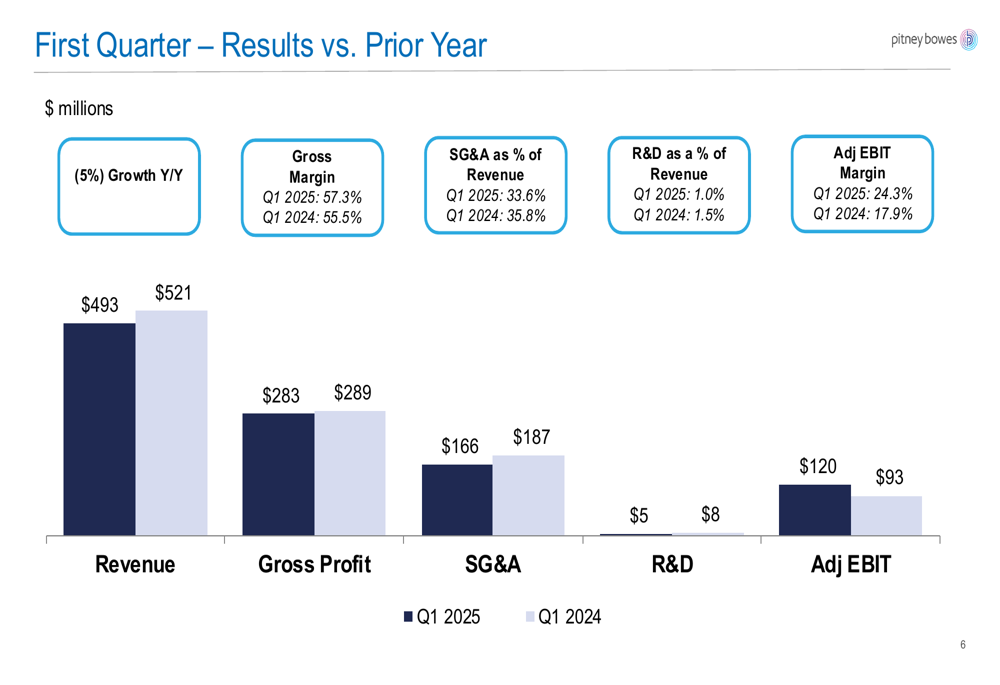
The company’s gross margin improved to 57.3% from 55.5% a year earlier, while SG&A expenses decreased both in absolute terms and as a percentage of revenue, reflecting the company’s successful cost reduction initiatives.
Segment Performance Analysis
Pitney Bowes’ business segments showed divergent performance in the quarter. The SendTech Solutions segment, which includes mailing equipment and related services, reported revenue of $298 million, down 9% year-over-year. However, the segment maintained profitability with adjusted EBIT of $95 million, up 1% from the prior year.
The company’s Presort Services segment delivered strong results, with revenue increasing 5% to $178 million and adjusted EBIT surging 36% to $55 million compared to Q1 2024.
The following chart details the Presort Services segment’s performance:

According to the presentation, the improvement in Presort Services was driven by higher revenue per piece, improved productivity, and cost reduction initiatives.
Within the SendTech segment, the Global Financial Services portfolio remained stable. Net finance receivables ended the quarter at $1.15 billion, while bank deposits stood at $701 million. The Pitney Bowes Bank Receivables Purchase Program has freed up $84 million of cash at the parent company level since inception.
Strategic Initiatives
Pitney Bowes highlighted several strategic initiatives aimed at enhancing shareholder value. The company is increasing its quarterly dividend by $0.01 to $0.07 per share and actively repurchasing shares and debt.
As detailed in the following slide on strategic progress:
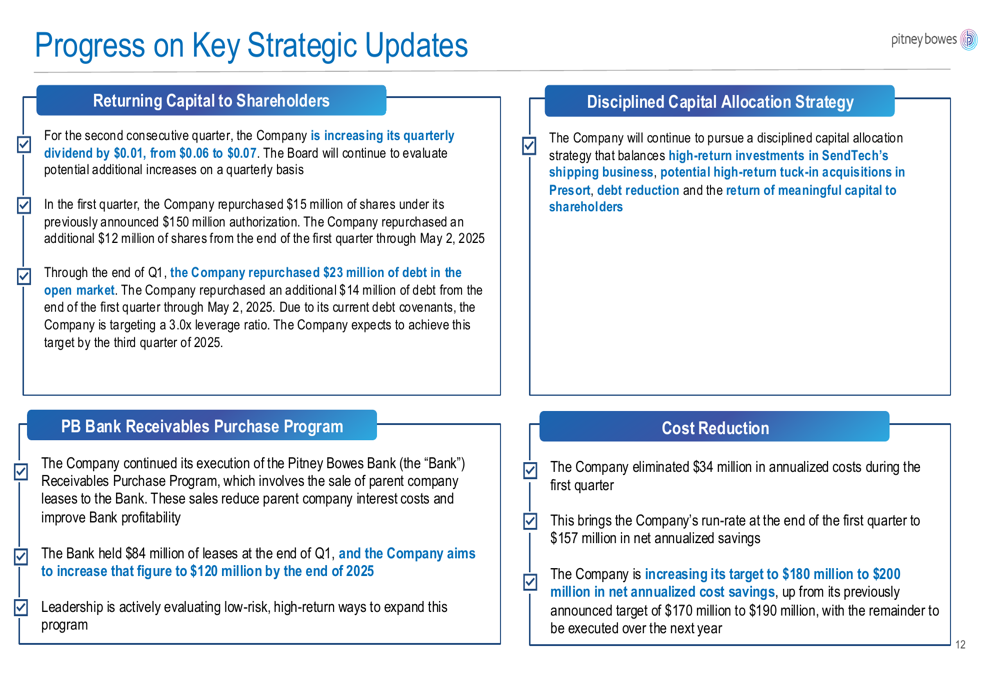
During Q1, the company repurchased $15 million of shares and $23 million of debt, with additional repurchases of $12 million in shares and $14 million in debt through May 2, 2025.
The company has made significant progress on cost reduction, eliminating $34 million in annualized costs during Q1, bringing the run-rate to $157 million. Pitney Bowes has increased its target for net annualized cost savings to $180-$200 million, reflecting confidence in its efficiency initiatives.
The consolidated statement of operations provides a comprehensive view of the company’s financial performance:
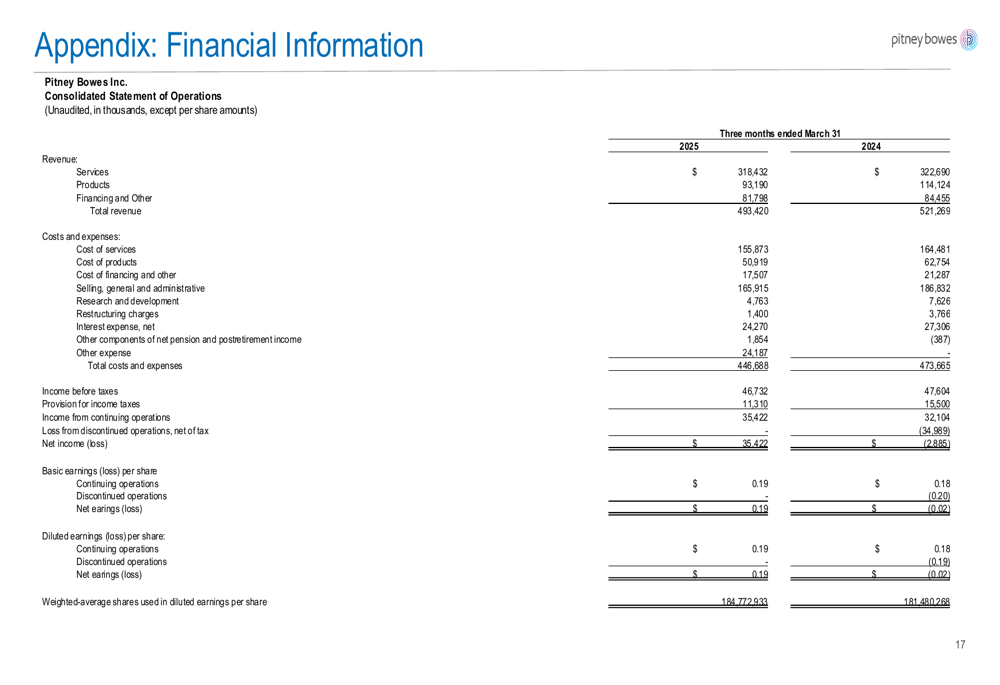
The balance sheet shows the company’s financial position as of March 31, 2025:
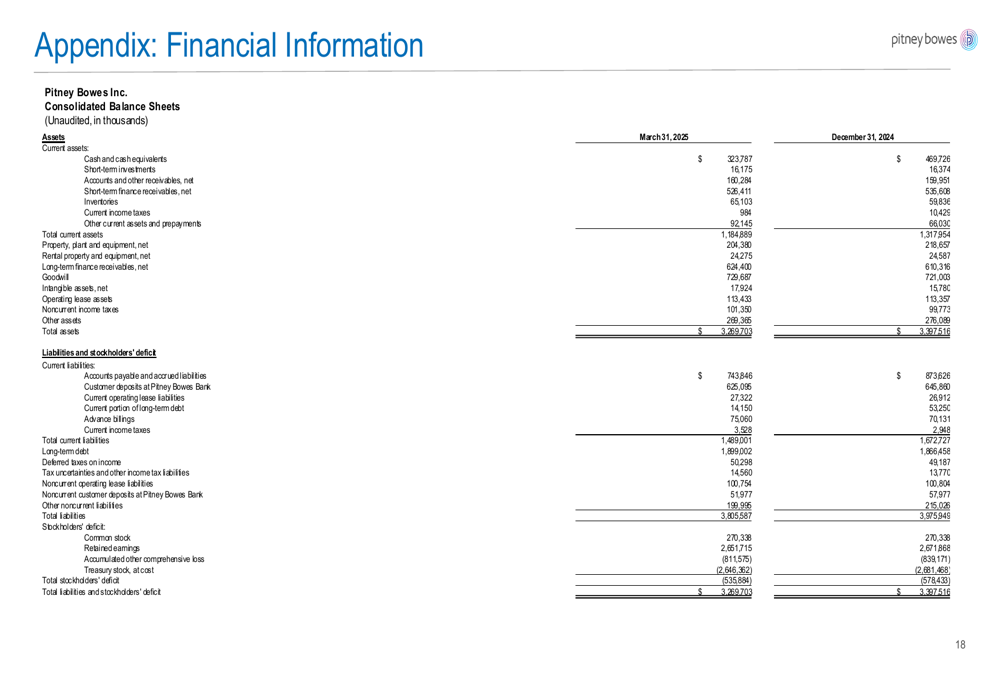
Outlook and Guidance
Pitney Bowes reaffirmed its full-year 2025 guidance, projecting revenue between $1,950 million and $2,000 million, adjusted EBIT of $450-$480 million, and adjusted EPS of $1.10-$1.30.
The company’s free cash flow guidance remains at $330-$370 million for the full year, despite a cash use of $17 million in Q1 2025, which included a $146 million use of working capital.
The following slide details the company’s full-year guidance:
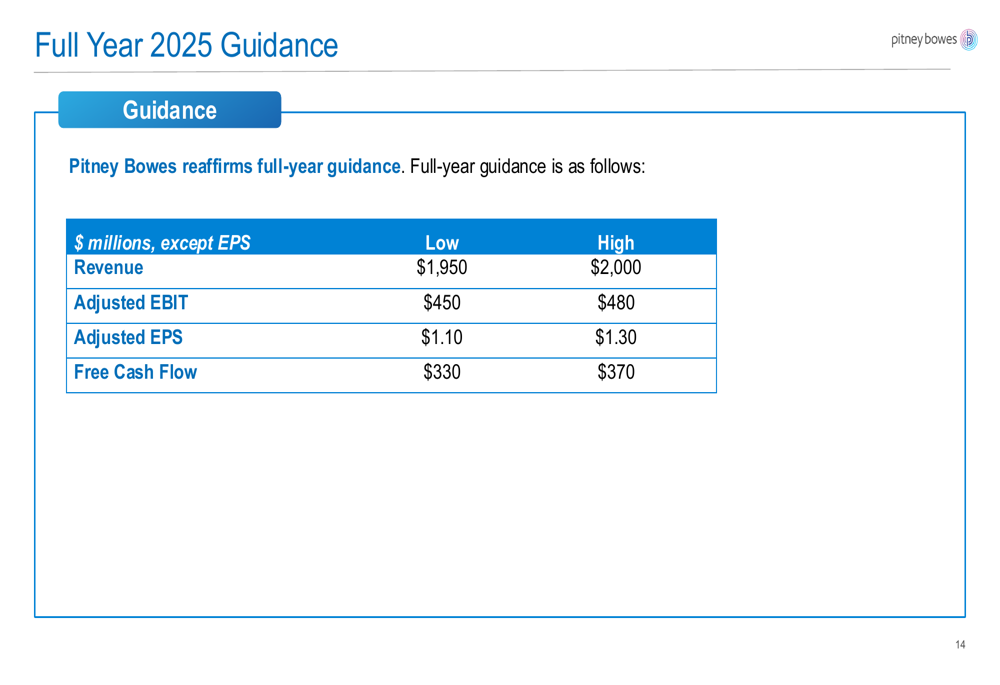
This guidance reflects the company’s continued focus on improving profitability through cost reduction initiatives and strategic capital allocation, even as it navigates revenue challenges in certain segments.
The detailed reconciliation of reported results to adjusted figures provides additional context for the company’s performance:
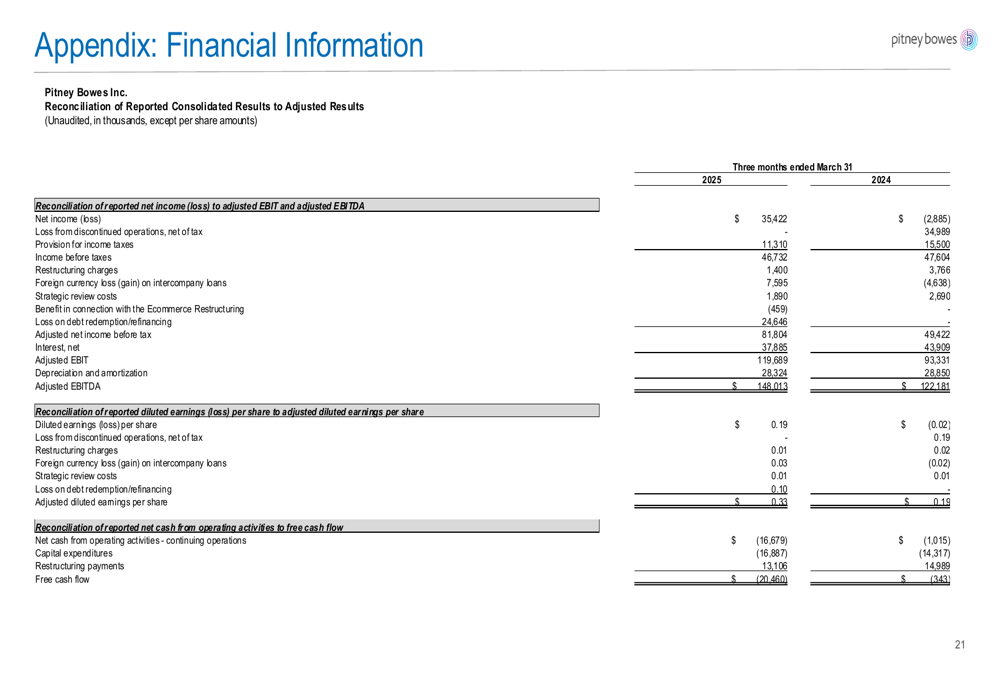
Pitney Bowes’ Q1 2025 presentation demonstrates that while the company continues to face revenue headwinds, particularly in its SendTech Solutions segment, its strategic focus on cost management and operational efficiency is yielding significant improvements in profitability metrics. The company’s commitment to returning capital to shareholders through dividends and share repurchases, along with its reaffirmed full-year guidance, suggests management confidence in the strategic direction.
Full presentation:
This article was generated with the support of AI and reviewed by an editor. For more information see our T&C.
